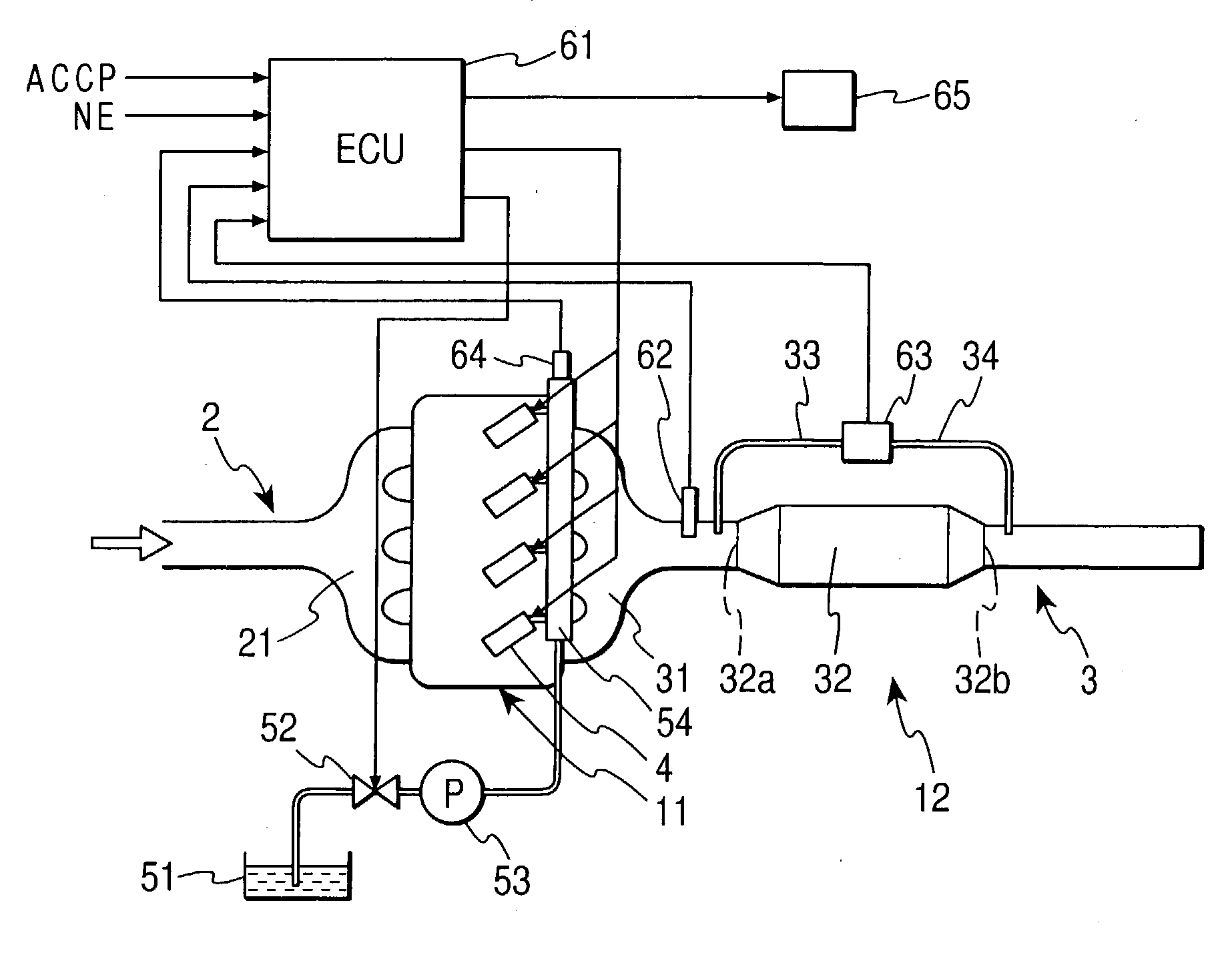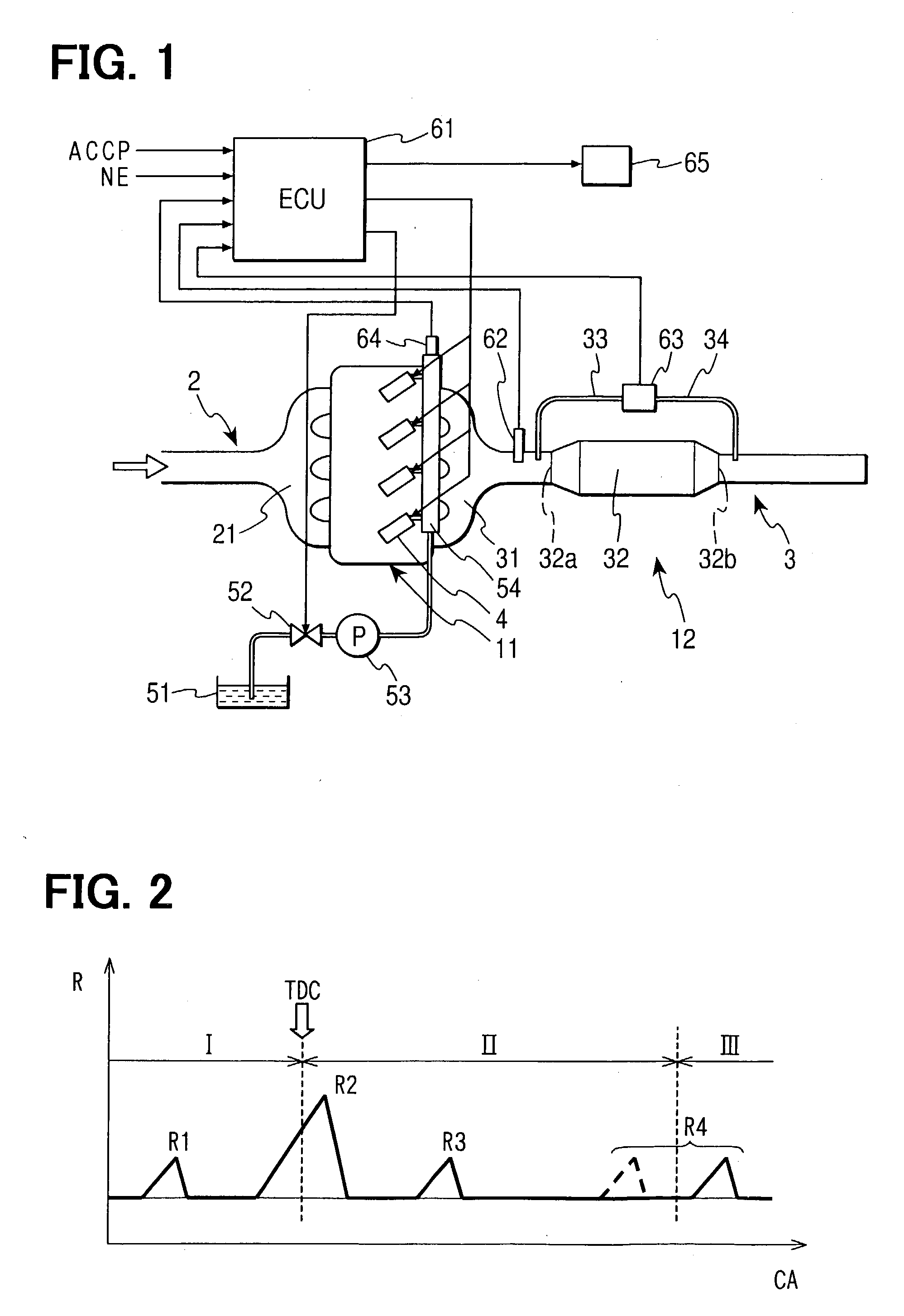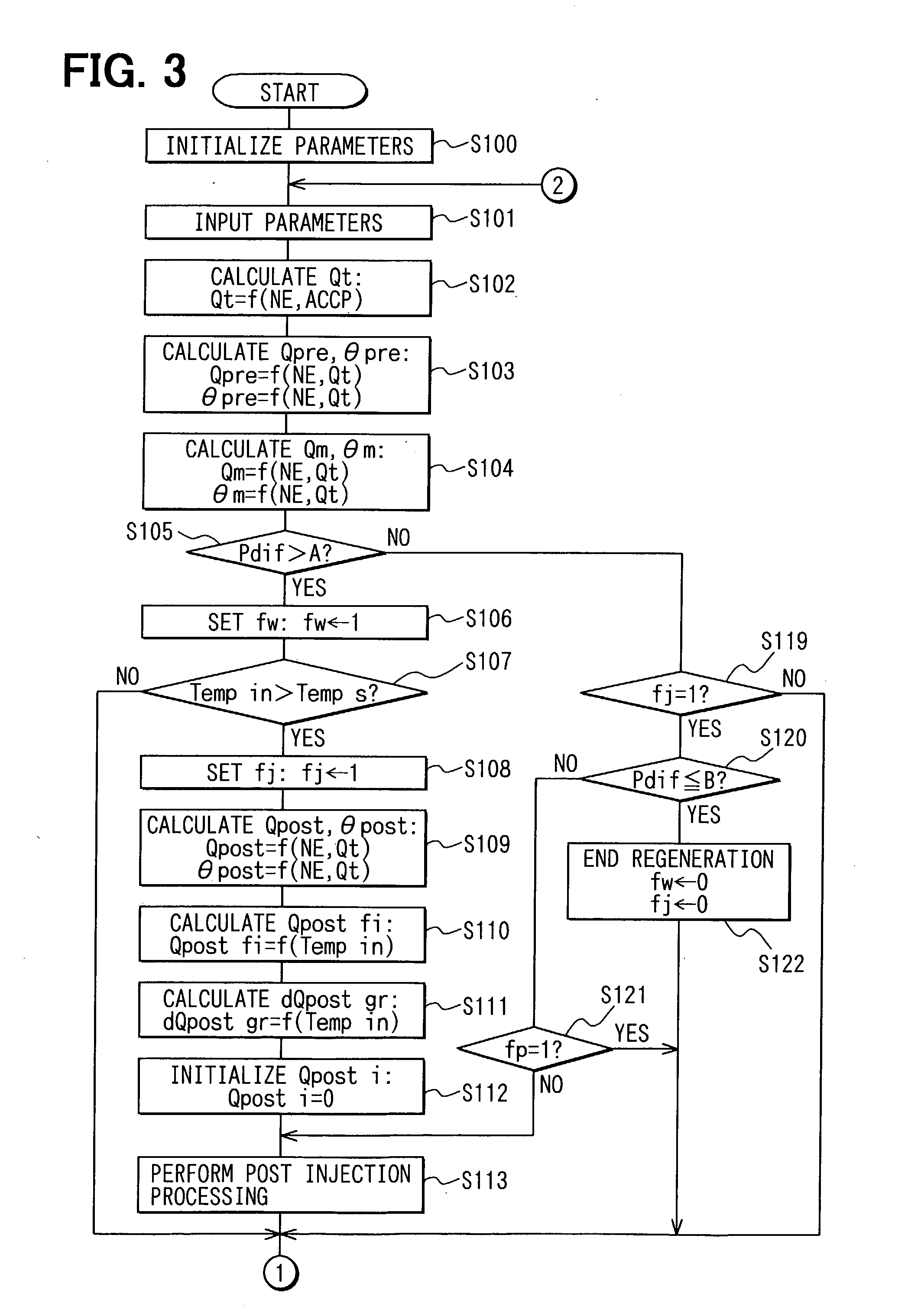Fuel injection control system for internal combustion engine
a control system and internal combustion engine technology, applied in the direction of electric control, machines/engines, mechanical equipment, etc., can solve the problems of white smoke or an unburned fraction of fuel, increased flow resistance at the particulate filter, and insufficient oxidization ability of the catalyst,
- Summary
- Abstract
- Description
- Claims
- Application Information
AI Technical Summary
Benefits of technology
Problems solved by technology
Method used
Image
Examples
Embodiment Construction
[0020] Referring to FIG. 1, a diesel engine having a fuel injection control system according to an embodiment is illustrated. The diesel engine has a four-cylinder type engine main body 11 and an after treatment system 12. The engine main body 11 is connected with an intake manifold 21, which is the most downstream part of an intake passage 2, and with an exhaust manifold 31, which is the most upstream part of an exhaust passage 3. A particulate filter 32 is connected with the exhaust passage 3 in the downstream portion of a gathering point of the exhaust manifold 31. The particulate filter 32 is a substantial part of the after treatment system 12. The exhaust gas discharged from respective cylinders of the engine passes through the particulate filter 32. The particulate filter 32 has a common structure. For instance, the particulate filter 32 is made of a porous material such as ceramics, through which the exhaust gas can pass. An oxidization catalyst such as platinum is supported ...
PUM
 Login to View More
Login to View More Abstract
Description
Claims
Application Information
 Login to View More
Login to View More - R&D
- Intellectual Property
- Life Sciences
- Materials
- Tech Scout
- Unparalleled Data Quality
- Higher Quality Content
- 60% Fewer Hallucinations
Browse by: Latest US Patents, China's latest patents, Technical Efficacy Thesaurus, Application Domain, Technology Topic, Popular Technical Reports.
© 2025 PatSnap. All rights reserved.Legal|Privacy policy|Modern Slavery Act Transparency Statement|Sitemap|About US| Contact US: help@patsnap.com



